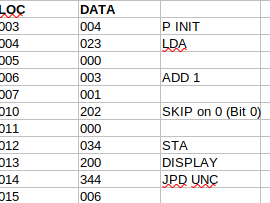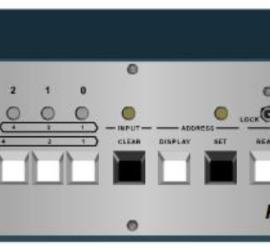Kenbak-1 SKIP Instruction 2
Introduction to the Kenbak-1 SKIP Instruction The Kenbak-1 SKIP Instruction allows us to skip an instruction in memory. We base this on a certain bit at a memory cell being high or low. Let’s say we only want to display odd numbers. If bit zero is high on the value Read More »





